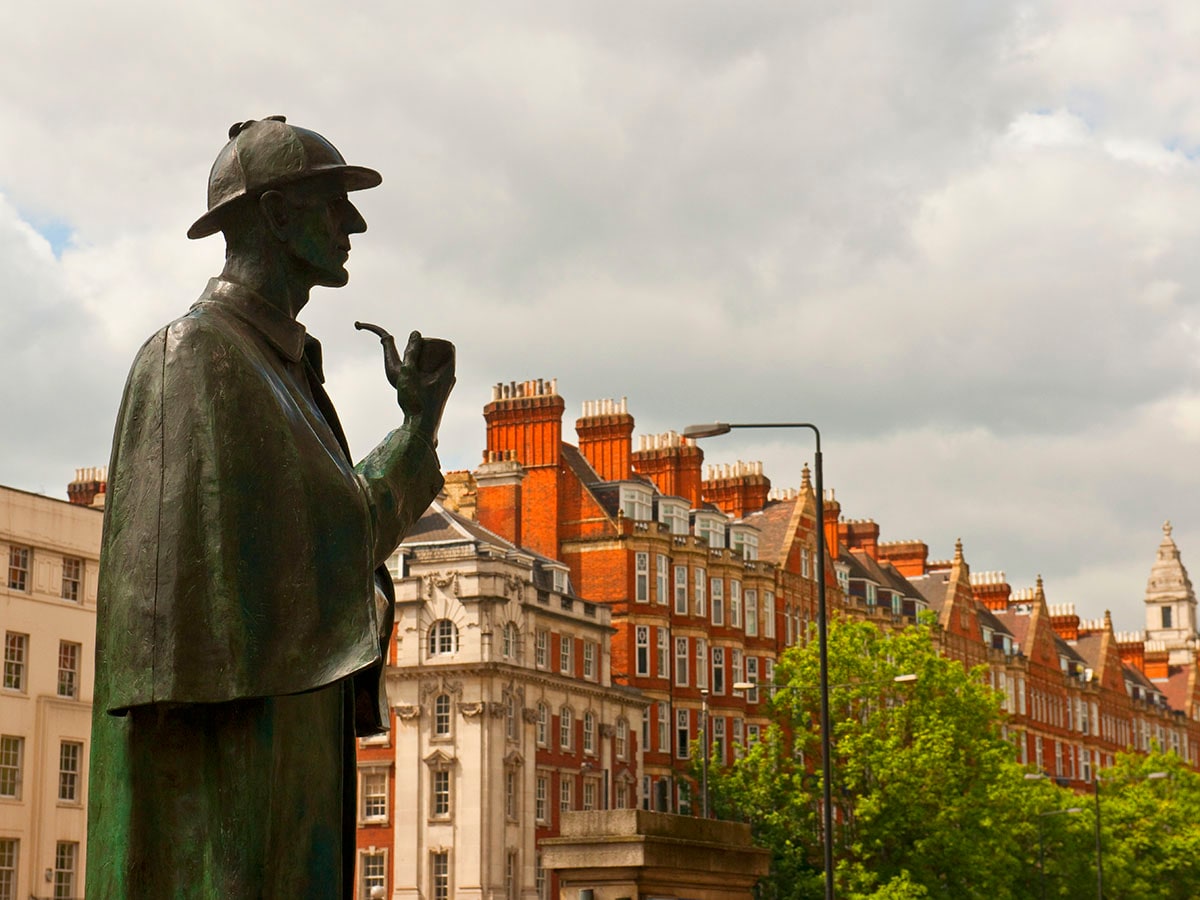 Conan Doyle’s Sherlock Holmes has been adapted for the big and small screen hundreds of times, with Guinness World Records hailing him the most portrayed literary human character in film and television history.
Conan Doyle’s Sherlock Holmes has been adapted for the big and small screen hundreds of times, with Guinness World Records hailing him the most portrayed literary human character in film and television history.
Image: Atlantide Phototravel/Getty Images
Sherlock Holmes fans are being promised a most authentic depiction of the fictional detective, with the restoration of a century-old silent film series chronicling the London sleuth’s adventures.
Audiences will be treated to a first glimpse of the restored works from the early 1920s next week at a London Film Festival screening, accompanied by a newly commissioned live score from Royal Academy of Music performers.
The October 16 premiere of just three of the short films, in what is being called “Silent Sherlock: Three Classic Cases”, will take place in the Victorian-era grandeur of the Alexandra Palace Theatre in north London.
A wider release on DVD and Blu-Ray, and encompassing an international tour, will then follow, with the British Film Institute (BFI) restoration team excited to unveil its years-long efforts.
“They’re the last silent Sherlock-related works to be restored,” explained Bryony Dixon, the BFI curator who led the project.
“The other surviving ones have already been done, so these are the things that audiences have been waiting for patiently,” she told AFP at the film charity’s national archive in Berkhamsted, northwest of the UK capital.
“Sherlock Holmes is always popular, and popular all over the world. As they say: you could just write Sherlock Holmes on a cardboard box and sell it.
“So it’s of interest to people and it’s time that it was seen.”
‘Authenticity’
Produced in 1921-23 by British film company Stoll Pictures, the 45 episodes of “The Adventures of Sherlock Holmes” and two feature films that are being restored all feature screen star of the era Eille Norwood.
He was author Arthur Conan Doyle’s favourite on-screen Sherlock.
Conan Doyle’s creation has been adapted for the big and small screen hundreds of times, with Guinness World Records hailing him the most portrayed literary human character in film and television history.
Famous faces to have played Sherlock recently include Robert Downey Jr and Benedict Cumberbatch.
But Stoll’s black-and-white adaptations were made with the author’s approval while he was still penning the stories, setting them apart, according to Dixon.
“People will be interested to see a Sherlock Holmes film version… in an early stage of development for the screen,” she said.
“There is a level of authenticity to this character, vis-a-vis the Conan Doyle creation, that you might not get with later Sherlock Holmes.”
Time-consuming
Restoring the more than 20 hours of footage—funded through an initiative of data storage and management firm Iron Mountain—began in 2019 at the BFI’s vast archive.
The repository, on a former farm, houses hundreds of thousands of reels dating back decades that are stacked on lofty rows of shelves in refrigerated vaults.
Particularly old footage on nitrate film—like the Stoll series—are also kept at another, even colder, site in western England but brought to Berkhamsted for restoration.
Conservators in white laboratory coats have spent months meticulously checking and cleaning reels of original negatives and copies.
Some were damaged, requiring painstaking repair.
“Despite all the damage, it is in pretty good condition,” said senior conservator Kirsty Shanks, noting that old reels can arrive decomposed into “powdery, sticky, solid messes”.
Many of the Sherlock nitrate prints were mouldy, oily, brittle and fragile, requiring time-consuming cleaning by hand, she added.
Another challenge has been negatives arriving in sections, rather than complete reels, requiring staff to sequence them.
‘Special’
Down a corridor lined with vintage movie posters and old film equipment on display, Ben Thompson has spent hundreds of hours in a windowless room, working on the endeavour.
The image quality lead has had to ensure the new digital version replicates the 1920s footage in texture, colour palette and other aspects.
He uses software to match the original filmmakers’ use of colour tinges—primarily blue and amber dyes—to parts of the negatives to help denote night, day and flashbacks.
Thompson also has a hand in repairs, noting the beginning and end of reels have often borne the brunt of past use and require the most intensive rehabilitation.
“It’s the starts and ends where you get into the real manual work,” he explained.
He recounted working for days on a single 10-second opening shot of Sherlock’s Baker Street home neighbourhood. In comparison, some mid-reel scenes required just minutes of repair.
BFI veteran Shanks described the project as the most “challenging” restoration of her career but still a labour of love.
